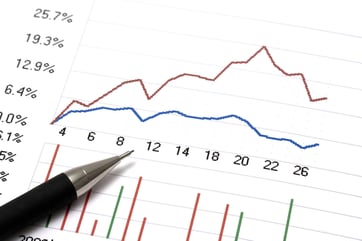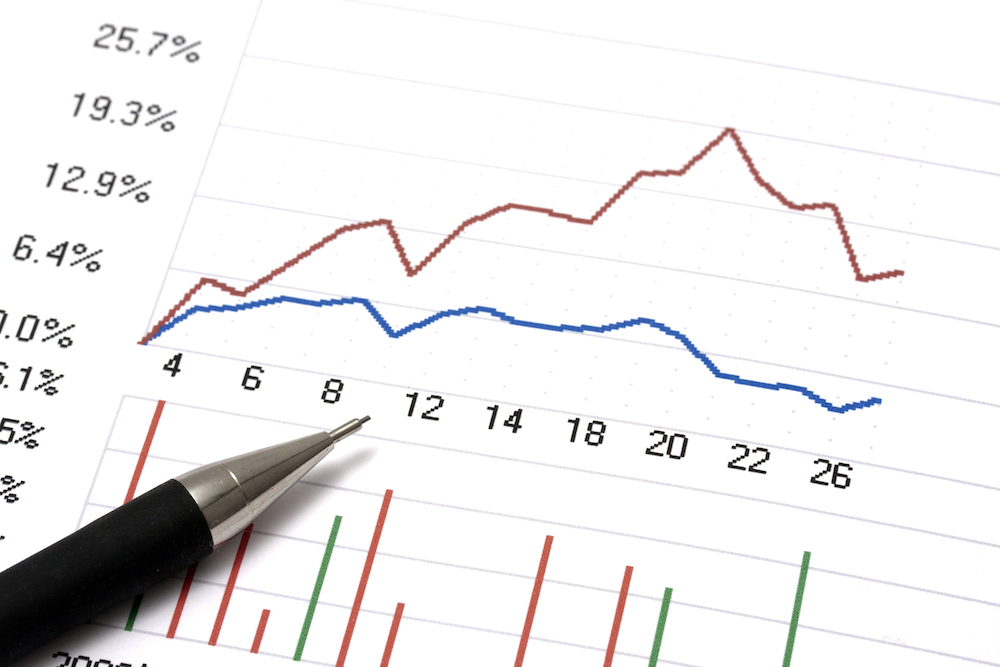 For global markets February was largely a continuation of the positive results generated in January only less so. All major Global and Regional indices are positive for the year for both the global equity and fixed income markets. The synchronization of positive global returns is a departure from 2018.
For global markets February was largely a continuation of the positive results generated in January only less so. All major Global and Regional indices are positive for the year for both the global equity and fixed income markets. The synchronization of positive global returns is a departure from 2018.
Related Blog: Do Stock Market Valuations Indicate Major Turning Points?
Domestically the S&P 500, NASDAQ, and Dow Jones Industrial Average all advanced roughly between 3% and 4%, decelerating from the 7% - 8% rate realized in January. Q4 S&P 500 earnings largely met expectations, perceived progress on trade talks with China, and lack of significant new negative news flow bolstered equity markets.
Growth stocks largely outperformed value stocks during the month and continue to hold an advantage year-to-date. The move into more defensive, value-oriented stocks which characterized the fourth quarter of 2018 has abated.
From a sector perspective Technology and Industrials led all other sectors in February both advancing more than 6%. The other nine S&P sectors were all positive with Real Estate, Communication Services, and Consumer Discretionary issues turning in returns below 1% for the month. Industrial stocks led all other sectors year-to-date (substantially) with returns of more than 18%. More importantly, the rotation of funds continues into the more cyclical sectors (Industrials, Materials etc.) and away from the more defensive sectors which outperformed on a relative basis in Q4 of 2018.
Bond performance domestically was slightly negative for the month. High Yield bonds posted gains over 1.50% and are up 6%+ for the year. This represents a reversal of the severe sell-off they experienced in Q4 of last year. The yield on the 10-year Treasury bond closed out February with a yield of 2.71% versus 2.63% at the end of January and 2.66% at the end of 2018. In other words, the 10-year yield hasn’t moved much this year and is meaningfully off its peak 2018 yield of around 3.25%. This can be attributed in part to continued fears about a global economic slowdown and the Federal Reserve reversing its stance on tightening monetary policy.
Global bond returns were slightly positive for the month although the return on Global Government bonds (i.e. Sovereign Debt) was negative for February. In a nutshell, global debt returns (U.S. included) remain essentially flat; given the global economic and interest rate environment, it is difficult to foresee this changing any time soon.
As we have mentioned several times, High Yield bond performance tends to correlate with the performance of small capitalization stocks. Consequently, it’s not surprising that small cap stocks continue to perform well in February and year-to-date. Domestic small cap stocks advanced 5.20% for the month and are up over 17% for 2019. As with High Yield bonds this reverses a disastrous fourth quarter and declines of more than 10% last year. The same pattern is evident in mid capitalization stocks both for the month, year-to-date, and last year.
Both Developed International and the Emerging Markets were up in February advancing 3.25% and .97% respectively. Both indices are up more than 8% year-to-date, and as mentioned above, are trading directionally with the domestic markets. The Dollar index has been essentially flat year-to-date.
While equity markets have recouped last year losses and then some it is unrealistic to assume that they will continue to move higher indefinitely. The big differences between today and six months ago are the reversal in policy stance by the Fed, and a realization that domestic fundamentals are moderating. With earnings estimates reduced and an advance in the market, the market multiple has increased from the 14x range to 16x+. Finally, many unknowns are still largely unknown – the results of trade negotiations with China; Brexit; and, the extent and impact of the slowdown in China on the world economy - to name a few.
Major market index returns for the month were as follows:
- S&P 500 2.97%
- NASDAQ 3.44%
- Dow Jones Industrial Average 3.67%
- Barclay’s Aggregate Bond Index -.06%
- High Yield Bonds 1.66%
- 3 Month Treasury Bill .18%
- MSCI EAFE (International Equity) 3.25%
- Emerging Markets .97%
- 10 Year Treasury Yield 2.71%
- Indices for the week and YTD are as follows:
- S & P 500 up .39% for the week; YTD index return is 11.84%
- NASDAQ Composite up .90% for the week; YTD index return is 14.47%
- Dow Jones Industrial Average down .02% for the week; YTD index return is 11.57%
- Benchmark 10-year Treasury bond yield stands at 2.76% - advancing marginally on the week
Week in brief:
The S&P 500 and NASDAQ markets continued their advance while the Dow Jones Industrial Average was essentially flat for the week. Bond yields were little changed. The week was relatively quiet with most of the news flow out of Washington D.C. – Talks with North Korea, China trade talk progress, and the usual, over-the-top, White House intrigue. There were a number of domestic economic releases which in aggregate looked soft. High profile earnings reports next week include Salesforce.com, Kohl’s, Target, Brown-Forman, Dollar Tree, and Costco. Economic releases next week are centered around various components of GDP. Finally, the European Central Bank (ECB) announces its monetary policy decision Thursday; in all likelihood it will keep its key interest rate steady at -.4% (that’s not a misprint!).










